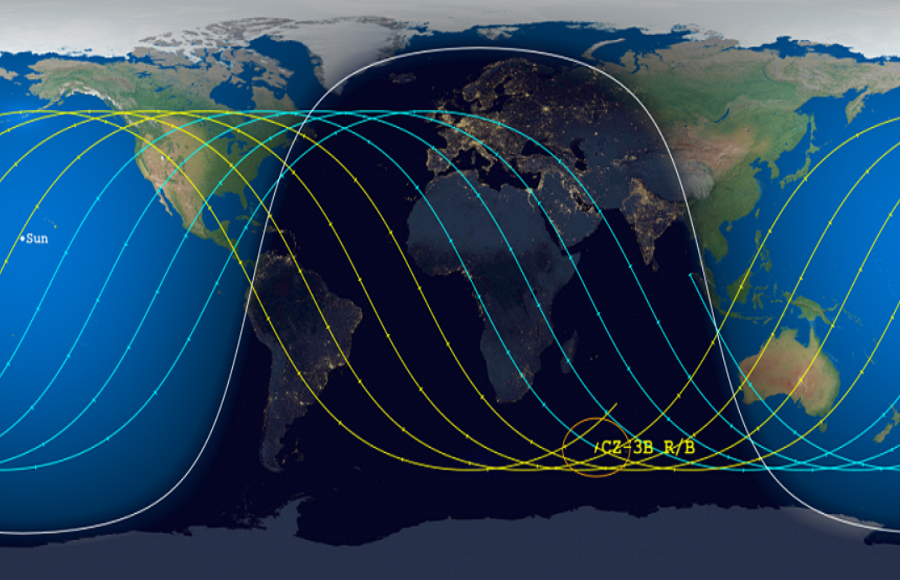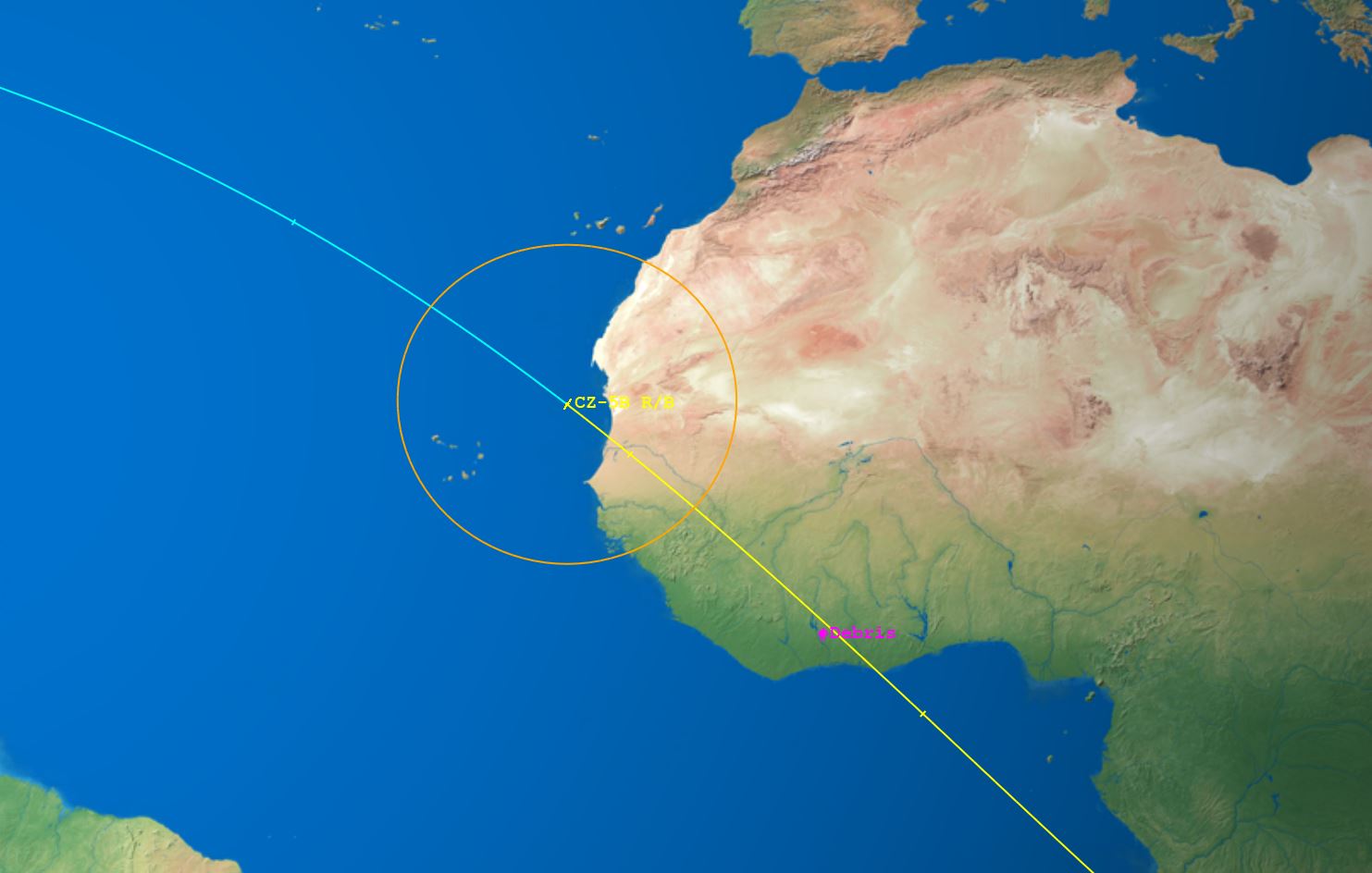
An out-of-control spent rocket launched by China in recent days is racing back towards Earth and what’s left of it is expected to impact Earth at some point in the coming days. Nearly on the one year anniversary of a similar event that unfolded last year on May 11 by the identical rocket type, the U.S. government is once again monitoring the skies for the potential impact of this space junk. Because it is out of control and moving erratically, experts aren’t sure exactly where it will land until an hour or two before it does; because it’s moving at speeds of over 15,000 mph, it may be too late to warn people of the impending impact zone.

On Thursday, the Long March 5B, a variant of China’s largest rocket, launched the 22.5-metric-ton Tianhe module for a space station China is building. Unable to participate in the International Space Station (ISS) due to restrictions imposed by the United States, China has embarked on building their own called “Tiangong.” Construction on the space station is due to be completed by sometime next year, with 10 more major launches planned this year to bring components of the station to space. With the ISS due to be retired after 2024, Tiangong may remain as the only working space station in Earth’s orbit.

The Long March 5, developed by the China Academy of Launch Vehicle Technology, roughly matches the capabilities of American rockets like the ULA Delta IV Heavy and the SpaceX Falcon Heavy. The massive rocket that was used to bring the GOES-R and GOES-S weather satellites to orbit was a ULA Atlas V; despite its size, it’s considerably smaller and less powerful than the Long March 5.
The Long March 5 core stage has roughly 7x the mass of the Space X Falcon 9 second stage. The second stage of a SpaceX Falcon 9 failed to deorbit properly following a launch in March; it made an uncontrolled reentry over the Pacific Northwest, dropping large debris into a farm field there. Fortunately, no one was injured.
The Wenchang facility on Hainan Island allows launch vehicles to soar over the South China Sea; previous launches lifted-off from inland launch facilities, forcing used rocket stages to fall onto land. Previous rocket stages have crashed into people’s homes in China. In the United States, such launches lift-off from launchpads near water, allowing spent rocket stages to tumble back to the ocean. Prior to such an event, NASA in partnership with local government agencies, put the projected splash-down area as a “no-fly” / “no-boat” area until the debris is safely down.


However, as was the case when China launched an experimental capsule into space last year, it appears the spent Long March 5 main stage will tumble back to Earth in an uncontrolled manner, potentially threatening some location on the planet with an impact. While experts believe much of the large spent rocket stage will burn-up upon re-entry, it is possible some parts of it, such as its massive motors, may survive re-entry and impact Earth. The spent rocket stage is roughly 100 feet long by 16 feet wide. This is approximately the same size as 4 school buses, parked 2 by 2.
In 2020, Aerospace Corporation tracked the falling space debris. In March of 2018, Aerospace also tracked a falling Chinese space station. It eventually crashing into the ocean. It is too soon to know with precision where and when this giant rocket or its remnants will crash.
The U.S. Space Force is tracking the falling Chinese rocket. Created in December 2019, the U.S. Space Force has been busy. If an entity in space or tumbling from space were to threaten U.S. interests, they’d work in partnership with other military branches and government teams to respond to the threat.
Because there is more ocean water and uninhabited land areas than there are inhabited ones, odds favor that this out-of-control rocket will impact an uninhabited area. However, it is too soon to say with certainty if that will happen. In last year’s incident, the out of control rocket traveled directly over Los Angeles and New York City and crashed 15 minutes later near the west coast of Africa. Debris was reported on the ground in the village of Mahounou in Cote d’Ivoire on the Ivory Coast. Had the re-entry occurred 15 minutes earlier, New York City could have seen considerable damage or loss of life from the impact of the fast-moving debris.